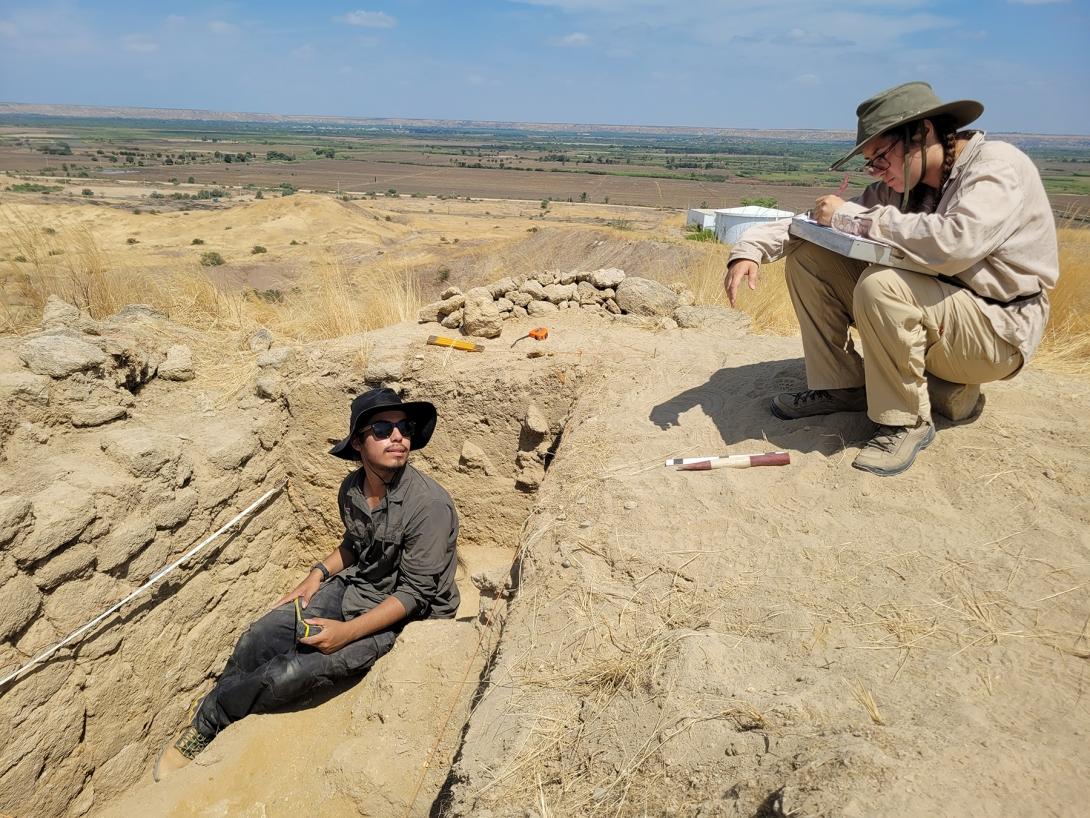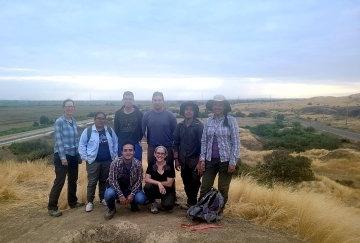Centre students, faculty dig deep into history at 秘鲁vian archaeological site

Two Centre College students explored 秘鲁vian ruins and aided in one faculty's research during a summer abroad experience.
One Centre College professor’s ongoing archaeological research project in 秘鲁 received a boost this summer.
Grissom Associate Professor of Anthropology Robyn Cutright has focused much of her archaeological research on the Andes region, 特别是秘鲁北部海岸. She was joined this summer by two rising seniors and anthropology/sociology majors, Joseph Falcon和Ayiana Ognan, who took their experiential learning at Centre to South America.
“What I learned in the classroom was only the beginning,福尔肯说. “By being able to participate in this research opportunity, I was able to learn at every step of my experience.”
The archaeological excavation and the mysteries that lay beneath the soil were riveting, he said.
“Whatever that may be dug out of the dirt,’ he said. “这是什么?”? 会不会是人造物?’”
Cutright, Falcon and Ognan formed part of an international team on the ground in 秘鲁, where they linked up with 秘鲁vian scholars and students. 库特赖特和她的同事们, University of Pittsburgh’s Gabi Cervantes and Sarah Taylor of the University of South Florida, 帮我拿到了10美元,000 in external grants to fund the season of work.

The team worked at an archaeological site (or a frontier outpost, whichever you prefer) administered by the Chimú state, one that controlled costal 秘鲁 from the 1100s to the 1400s before being conquered by the Inca.
“This part of 秘鲁 has not been studied by archaeologists very extensively, which means that everything we found this season told us something new,科特赖特说. “We were able to see the impact of Chimú conquest on the local landscape and found evidence that local workers put their own stamp on Chimú buildings. We also found a workshop area where people were producing metal and ceramic objects, which tells us that they had an economic interest in administering the area, 还有山顶上的堡垒, which tells us that the Chimú invested a lot of resources in fortifying their northern frontier.
“总的来说, this season of research will really move our understanding of Chimú imperialism and Piura archaeology forward.”
Students and Cutright excavated sites and recorded their findings through photographs and drawings. From cooking pots and bones to fingerprints in adobe, the group spent the summer in field research at Monte Lima in Piura, 秘鲁.
“Joseph and Ayiana worked side by side with 秘鲁vian students and professionals, practicing intercultural collaboration and communication skills that are highly valued in today’s global workplaces,科特赖特说. “While gaining proficiency in archaeological field and lab methods, they also had an opportunity to apply creative problem solving and critical thinking skills in a physically and intellectually demanding environment. Hopefully they learned that archaeology is a little more collaborative and intellectually rigorous than Indiana Jones makes it seem!”

Falcon said his work in the classroom at Centre helped prepare him for the real-world experience in the field.
“My interest piqued with the mention of conducting actual archaeological excavations in 秘鲁, 一个历史悠久,考古丰富的国家,福尔肯说. “Taking what I have learned from my previous classes, 我已经能够运用方法, as well as learning everything that comes with archaeological research from day one to its final day.”
那好奇心不仅带走了路易斯维尔, 肯塔基州,原产于南美洲沿海, it also drove home the idea that the world is a classroom and life is full of lessons, 尤其是对人类学家来说.
“Learning is not confined just to the classroom, and never should be,” he said. “学习可以发生在世界任何地方, 无论是日本, 马来西亚, 秘鲁,甚至是你当地的咖啡店.
“It is up to you to grasp that knowledge that awaits out there.”



